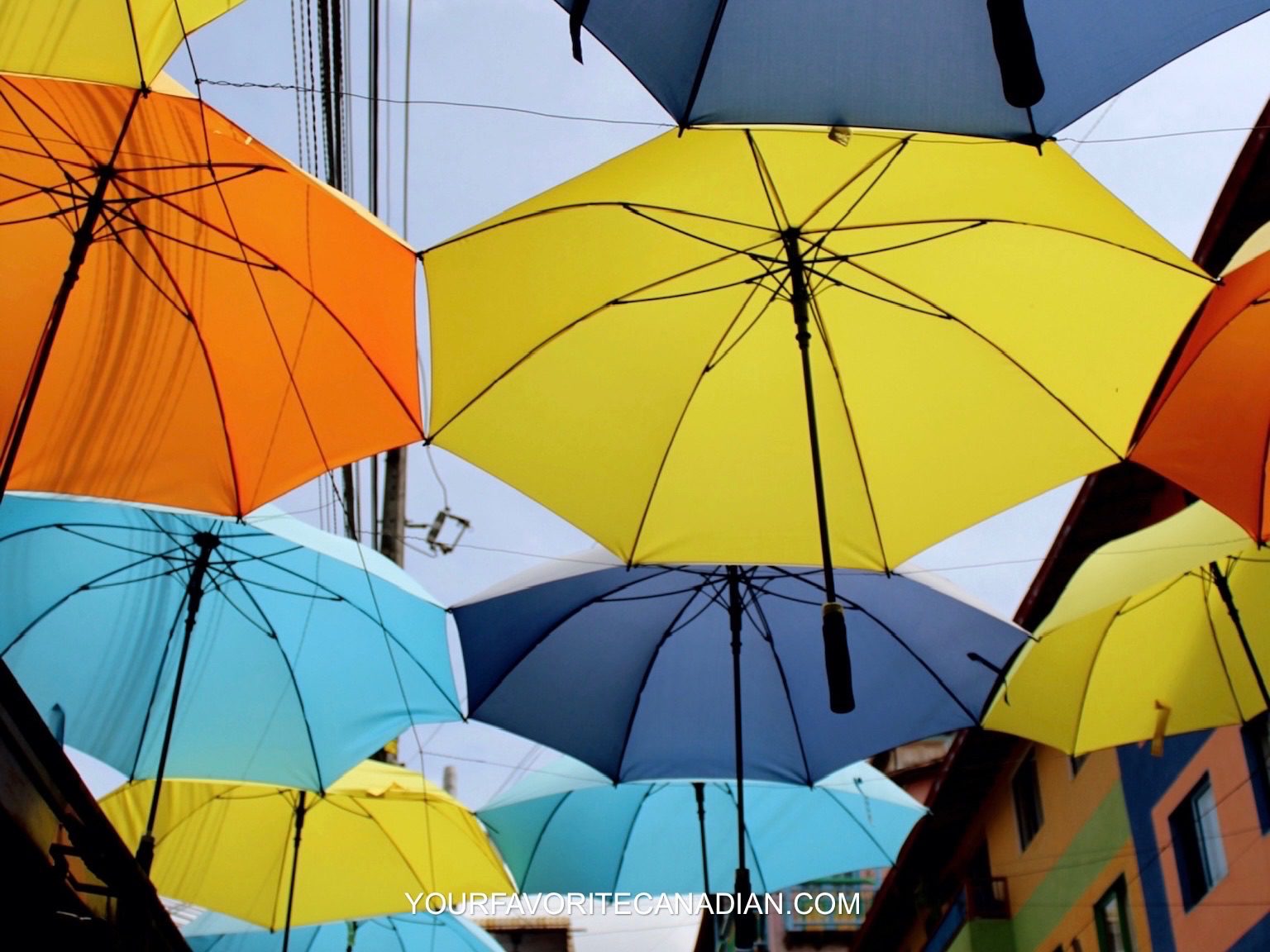Bienvenue en Colombie, un pays débordant de couleurs, de culture et d’aventure! Que vous rêviez d'une randonnée à Salento, d'une journée de détente sur les plages des Caraïbes ou d'une immersion dans l'histoire et la gastronomie locales, ce guide de voyage est là pour vous.
Préparez-vous à découvrir toute l'information essentielle pour rendre votre aventure en Colombie inoubliable!
Table des matières
- Meilleur moment pour visiter : Climat, affluence et prix
- Culture locale et étiquette: Normes culturelles, langue, étiquette - visite de sites religieux
- Monnaie et paiements
- Options d’hébergement : Types d'hébergement, recommandations, applications essentielles
- Cuisine locale
- Transport
- Sécurité et santé : Conditions de l'eau du robinet, précautions sanitaires, informations d'urgence, conseils de sécurité
- Exigences de visa
- Rester connecté : Obtenir une carte SIM en Colombie
- Attractions et activités incontournables
1
Meilleur moment pour visiter
Colombia’s climate is as diverse as its geography, ranging from tropical rainforests and beaches to cooler highland cities. However, the country doesn’t experience distinct seasons like summer and winter. Instead, its weather is divided into two primary periods: the dry season (verano) and the rainy season (invierno).
Dry Season (December to March, July to August)
The dry season is considered the best time to visit Colombia, especially for outdoor adventures and exploring natural wonders. Expect sunny skies and pleasant weather across the country, making it ideal for:
- Beaches: Visit Caribbean coastal gems like Cartagena, Tayrona National Park, and the Rosario Islands for pristine sands and calm waters.
- Mountains and Hiking: Trek the Cocora Valley without worrying about slippery trails.
Rainy Season (April to June, September to November)
The rainy season brings frequent showers, particularly in the Amazon and Pacific regions. However, the rain often comes in short bursts rather than all-day downpours, and many areas remain lush and beautiful. It’s the perfect time to see Colombia’s landscapes at their greenest, with fewer tourists. Also, Bogotá and Medellín experience mild rain, but their attractions remain accessible year-round.
Crowds and Prices in Colombia
Peak Season (December to February, Easter, and mid-June to mid-July)
Colombia’s peak tourist season aligns with its dry months and major holidays. During these times:
- Foule : Popular destinations like Cartagena, Medellín, and Tayrona National Park are full of both international and local travelers.
- Prix : Flights, accommodations, and tours are at their peak prices, yet they remain affordable compared to other countries in the Americas, such as Mexico and Costa Rica. Booking in advance is essential to secure your spot and avoid inflated costs.
Shoulder Season (March to April, September to November)
The shoulder seasons offer a sweet spot for travelers seeking moderate weather, fewer crowds, and more affordable prices.
- Benefits: Enjoy a relaxed atmosphere in tourist hotspots and take advantage of discounted rates for accommodations and tours.
- Points forts : This is an excellent time to explore cultural cities like Bogotá and Medellín or enjoy the Coffee Region without the crowds.
Low Season (May to June, October to November)
The low season coincides with the rainiest months, particularly in coastal and jungle areas.
- Moins de touristes : If you don’t mind occasional rain, you’ll find quieter attractions and lower prices.
- Activités : Whale watching on the Pacific coast and cultural festivals in less touristy areas make this season worth considering.
When to Visit for Specific Experiences
- Flower Festival (August): Medellín comes alive with vibrant parades and floral displays during the Feria de las Flores.
- Coffee Harvest (April to May, October to November): Experience Colombia’s Coffee Region during its harvest season for a unique experience.
2
Culture locale et étiquette
Colombia is a vibrant country where diverse traditions, indigenous roots, and Spanish influences create a culture that is dynamic and welcoming. Whether you’re exploring bustling cities, serene mountain villages, or tropical coasts, understanding a bit about Colombia’s cultural norms, language, and etiquette will help you make the most of your visit while connecting with the warm-hearted locals.
Normes culturelles
Colombians are known for their friendliness, hospitality, and strong emphasis on family and community. Family gatherings are central to Colombian life, and celebrations often include extended family members. Colombians are open and warm, so a polite and respectful attitude will always be appreciated.
Greetings:
- A handshake is standard when meeting someone for the first time.
- Using formal titles like Señor (Mr.), Señora (Mrs.), or Señorita (Miss) when addressing someone initially is a sign of respect. Once you’re familiar, switching to first names is welcomed.
Punctuality: Colombians often take a relaxed approach to time, particularly for social gatherings. While it’s polite to arrive on time for professional appointments, a slight delay is usually acceptable for casual events.
Langue
The official language of Colombia is Spanish, and although English is slightly understood in major cities and tourist areas, speaking a few basic Spanish phrases will greatly enhance your experience. Colombians appreciate visitors who make an effort to engage in their language, even if it’s just the basics.
Here are a few useful phrases:
- Hola (Hello)
- Gracias (Thank you)
- Por favor (Please)
- ¿Cuánto cuesta? (How much does it cost?)
- No hablo español muy bien (I don’t speak Spanish very well)
These small efforts can go a long way in building connections and showing respect for Colombian culture.
Etiquette – Visiting Religious and Cultural Sites
Colombia is predominantly Catholic, and religious and cultural sites play an important role in its heritage. Whether you’re visiting a grand cathedral in Bogotá, a rural chapel, or an indigenous sacred site, respectful behavior is essential.
Tips for Visiting Religious and Cultural Sites:
- Habillez-vous modestement : Avoid revealing clothing. For men and women, covering shoulders and knees is generally appropriate.
- Be mindful of noise: Keep conversations quiet and avoid making unnecessary noise while inside places of worship.
- Photographie : Always check for signs or ask permission before taking photos, particularly during services or in areas considered sacred.
- Avoid disruptions: Refrain from eating, drinking, or using your phone. Removing hats before entering a religious site is a traditional sign of respect.
- Dons : If there’s a donation box, consider leaving a small contribution to help maintain the site.
3
Monnaie et paiements
Planning your finances is key to enjoying a smooth trip to Colombia. Here’s everything you need to know about handling money in the country.
Colombian Peso (COP): The Local Currency
The official currency in Colombia is the Colombian Peso, abbreviated as COP and symbolized by “$”. Banknotes are available in denominations of 2,000, 5,000, 10,000, 20,000, 50,000, and 100,000 pesos, while coins come in 50, 100, 200, 500, and 1,000 pesos.
Taux de change
Exchange rates fluctuate daily based on global market conditions. As of late 2024, the approximate rates are:
- 1 USD = 4,000-4,200 COP
- 1 CAD = 3,000-3,200 COP
It’s a good idea to check the current rates before your trip to estimate your budget.
Currency Exchange Tips
Currency exchange services are widely available in Colombia, including at airports, banks, and exchange bureaus (casas de cambio). However, you’ll usually get a better rate by withdrawing money from an ATM or exchanging currency at your local bank before traveling.
Best Practices for Currency Exchange:
- Avoid airport kiosks, as they typically have lower rates and higher fees.
- Use official ATMs or exchange counters in safe areas like banks or malls.
- If withdrawing cash from an ATM, decline the ATM’s currency conversion option. Your home bank will likely provide a better rate.
Limites et frais de retrait aux guichets automatiques
ATMs are widely available in cities and tourist areas. Here’s what you need to know:
- Limites de retrait : Most Colombian ATMs allow withdrawals of up to 600,000 to 2,000,000 COP per transaction, depending on the bank. Be aware of daily limits set by your home bank.
- Frais :
- Colombian ATMs often charge a fee of 10,000 to 20,000 COP per transaction.
- Your home bank may also charge international withdrawal fees.
To save on fees, withdraw larger amounts of cash at once rather than making frequent small withdrawals.
Using Credit and Debit Cards
Credit and debit cards are widely accepted in Colombia, especially in cities and tourist areas. Visa and Mastercard are the most commonly accepted, while American Express may not be accepted everywhere, particularly in rural areas or small businesses.
Things to Keep in Mind:
- Many businesses have a minimum purchase requirement for card payments, so always carry some cash.
- Contactless payment options like Apple Pay and Google Pay are available in major cities but not yet widespread.
- Check with your bank for foreign transaction fees to avoid unexpected charges on your card.
Étiquette pour les pourboires
Tipping is appreciated in Colombia but not always mandatory. Here’s a quick guide:
- Restaurants : A service charge of 10% is often included in the bill, but if it isn’t, leaving 10% to 15% is customary.
- Bars : Tipping is optional, but 1,000 to 2,000 COP per drink is appreciated.
- Hôtels : Tip 5,000 to 10,000 COP per bag for bellhops and 5,000 to 10,000 COP per day for housekeeping.
- Taxis : Tipping is not expected for standard rides. However, rounding up the fare is common and appreciated.
- Guides touristiques : For group tours, tip 10,000 to 20,000 COP per person. For private tours, tipping 10% to 20% of the tour cost is customary.
US Dollars: Should You Use Them?
While US dollars are accepted in some tourist areas, it’s not common practice in Colombia. Paying in dollars often results in unfavorable exchange rates. It’s better to have Colombian pesos for transactions. Note that ATMs in Colombia dispense only pesos, so if you plan to bring US dollars, exchange them before traveling.
4
Options d’hébergement
Le choix de votre hébergement peut avoir un impact majeur sur votre expérience de voyage. Pour vous aider à faire le meilleur choix, voici un aperçu des trois principaux types d’hébergements, accompagné de recommandations basées sur mon dernier voyage et d’applications indispensables qui faciliteront la réservation de votre séjour!
Types d’hébergements
- Villas : Louer une villa est de loin l'option la plus visuellement impressionnante, offrant des séjours uniques et mémorables. Les villas sont généralement équipées comme des appartements, avec une cuisine et un réfrigérateur, vous permettant de préparer vos propres repas. Bien que les villas soient souvent plus chères, vous pouvez économiser de l'argent en cuisinant au lieu de manger à l'extérieur tous les jours. Cette option est particulièrement idéale pour les familles ou les grands groupes, car partager le coût peut la rendre plus abordable et plus agréable que de rester dans des chambres d'hôtel séparées.
- Hôtels : Les hôtels offrent un large éventail d'options pour différents budgets. Séjourner dans un hôtel vous offre le confort d'un service de ménage quotidien, du service en chambre et l'accès à diverses commodités que vous ne trouverez pas dans une villa, comme les spas, les cours de yoga, et plus encore. Si vous appréciez la sécurité et la commodité, les hôtels sont une excellente option, surtout pour ceux qui préfèrent avoir du personnel disponible 24h/24 pour répondre à tous leurs besoins.
- Auberges de jeunesse : Pour les backpackers et les voyageurs à petit budget, les auberges de jeunesse sont le choix le plus économique. Bien qu'elles manquent de luxe et de confort par rapport aux villas ou aux hôtels, les auberges offrent une expérience unique et sociale, parfaite pour les jeunes voyageurs. Vous aurez généralement un lit dans un dortoir partagé, ce qui est une excellente façon de rencontrer de nouvelles personnes, surtout si vous voyagez en solo. De nombreuses auberges organisent également des activités de groupe pour aider les clients à se connecter. Si vous êtes jeune et prêt à sacrifier un peu de confort pour une expérience mémorable et sociale, les auberges sont faites pour vous.
Here are two of my favorite places where I stayed during my trip to Colombia:
Medellín: With 5 stars on Airbnb, this is the nicest Airbnb I’ve ever stayed at. Its location was in a great neighborhood, and the size of the apartment was incredible, even featuring a hammock in the living room. With 3 bedrooms and 2 full bathrooms, it’s a no-brainer that this Airbnb should be your top choice if you’re visiting Medellín with a group of 3 to 8 people. Click ici to see the Airbnb!
Salento: With a 4.89-star rating on Airbnb, this small apartment was a highlight of our stay in the village. Its central location made it easy to access all the activities we had planned. Carmen, the host, was incredibly kind, answering all our questions and being very accommodating with our luggage. If you’re traveling as a group of 3 to 6 people, I highly recommend booking this option! Click ici to see the Airbnb!
Applications essentielles
- Booking.com : Cette application offre un large éventail d'hébergements, y compris des hôtels, des auberges et des villas, le tout en un seul endroit.
- Airbnb : Parfait pour trouver des villas ou des appartements uniques et originaux qui offrent une expérience de type « chez soi ».
- Hostelworld : Spécialisée dans les auberges, cette application propose un excellent système de notation pour vous aider à choisir la meilleure option. Elle inclut également des chats de groupe où vous pouvez vous connecter avec d'autres personnes qui séjourneront dans la même auberge.
Recommandation supplémentaire : Une fois que vous avez trouvé un endroit qui vous plaît, surtout pour les hôtels et les auberges, assurez-vous de visiter leur site Web officiel. Souvent, vous pouvez trouver des réductions exclusives en réservant directement avec eux.
5
Cuisine locale
Colombian cuisine is a celebration of the country’s rich cultural heritage and diverse landscapes, offering a mix of hearty traditional dishes, fresh ingredients, and regional specialties. Here’s everything you need to know to make the most of your food adventure in Colombia:
Must-Try Dishes in Colombia
- Arepas: A staple of Colombian cuisine, arepas are made from cornmeal and come in various styles. Some are plain, while others are stuffed with cheese, eggs, or meats.
- Bandeja Paisa: This plate is Colombia’s national dish. It features beans, rice, chorizo, ground beef, fried plantain, avocado, and a fried egg, often with a side of arepa.
- Ajiaco: A comforting chicken and potato soup from Bogotá, flavored with guasca (a local herb), and often served with capers, cream, and avocado on the side.
- Sancocho: A traditional stew made with meat (chicken, beef, or fish), plantains, potatoes, and yucca, often served with rice and avocado.
- Empanadas: Crispy pockets of dough filled with meat, potatoes, or cheese.
Dining Culture in Colombia
In Colombia, meals are more than just food—they’re moments to connect with family and friends. The main meal of the day is lunch, often served between 12 pm and 2 pm. It’s typically a multi-course affair, starting with soup or salad, followed by a main dish and a sweet dessert or fresh juice. Dinner is usually lighter, often consisting of arepas, soups, or small snacks.
Favoris de la cuisine de rue
- Arepa de Huevo: A fried arepa filled with a whole egg, commonly found on the Caribbean coast.
- Pandebono: A cheesy bread made with cassava flour, perfect for a quick snack.
- Patacones: Crispy fried green plantains, often served with toppings like cheese or guacamole.
Boissons et desserts
- Aguardiente: Colombia’s traditional anise-flavored spirit, perfect for toasting with locals.
- Cholado: A refreshing dessert made with shaved ice, fruit, condensed milk, and sweet syrups.
- Canelazo: A warm drink made with aguardiente, cinnamon, and panela (unrefined cane sugar), popular in cooler Andean regions.
- Postre de Natas: A creamy dessert made with milk, sugar, and cinnamon, originating from Bogotá.
- Cremas Alba: My favorite dessert in Colombia! It’s a popsicle made with fresh fruit, lime juice, and a touch of salt. You absolutely need to try the passion fruit and mango flavors—they’re amazing!
Restez connecté! Suivez-nous sur les réseaux sociaux pour du contenu exclusif et des mises à jour sur nos voyages.


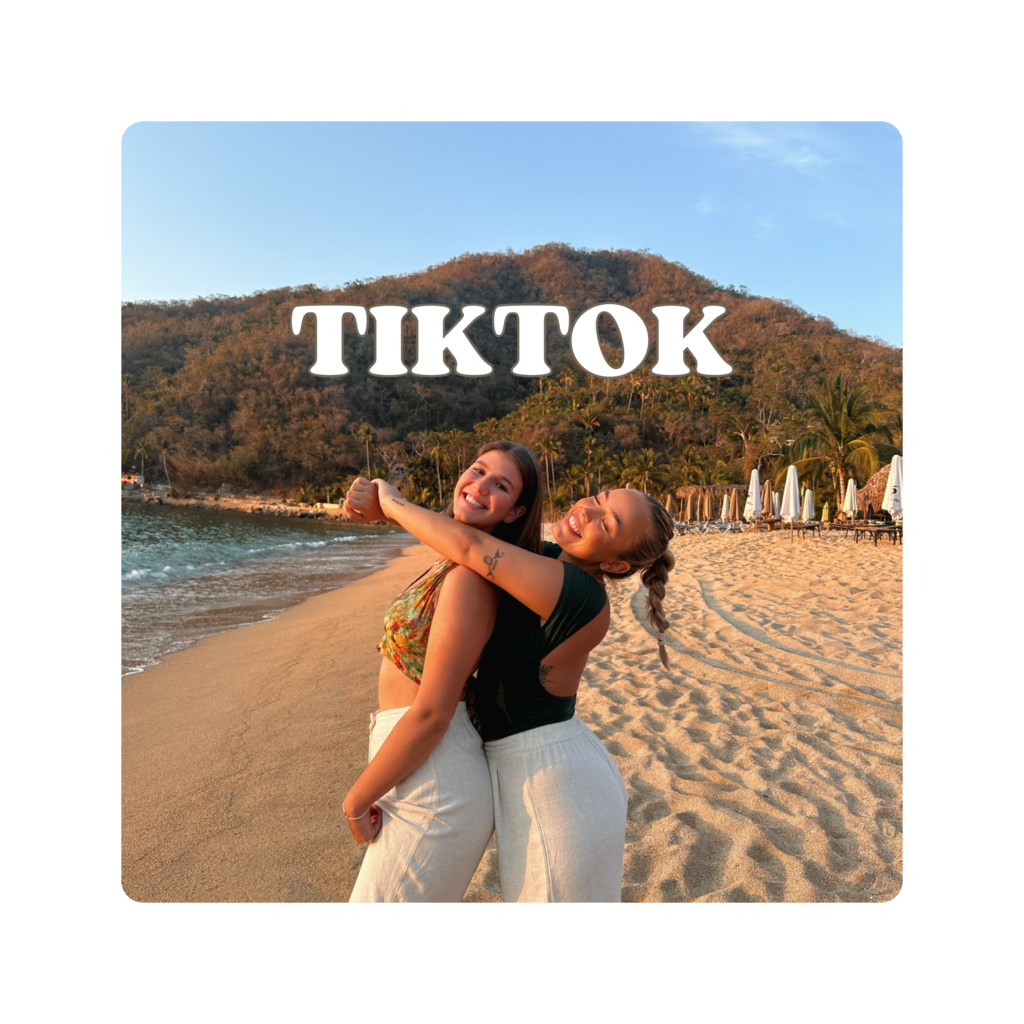
Sur notre site web, vous trouverez toutes les informations essentielles et conseils, tandis que sur nos réseaux sociaux, vous aurez encore plus – des expériences personnelles, des moments amusants, des vidéos époustouflantes etc!
6
Transport
Getting around Colombia is an adventure in itself, offering a variety of transportation options to fit different budgets and travel preferences. With its diverse geography, dominated by mountains, traveling between cities often requires planning and research. To help you make the most of your journey, here’s an overview of the main ways to get around within cities and between destinations in Colombia:
Dans les villes
- Autobus publics
Les autobus publics sont une option abordable et pratique pour voyager dans les villes et villages colombiens, bien que les services varient selon les endroits.
- Dans les grandes villes : À Bogotá et Medellín, les systèmes de transport public sont mieux organisés. Bogotá dispose du TransMilenio, un système de bus à haut débit avec des voies réservées, ce qui en fait un moyen efficace pour naviguer dans la ville. Vous aurez besoin d’une carte Tullave, que vous pouvez acheter et recharger aux stations ou kiosques. Medellín, quant à elle, propose le Metroplús, intégré au métro de la ville. Vous aurez besoin d’une carte Cívica, disponible dans les stations de métro, pour payer vos trajets.
- Dans les petites villes : Les autobus publics dans les petites villes sont souvent des véhicules colorés ou des colectivos (minibus partagés). Ils n’ont généralement pas d’horaires fixes et peuvent s’arrêter n’importe où le long de leur itinéraire pour prendre ou déposer des passagers. Les trajets se paient directement en espèces au conducteur.
- Taxis et services de covoiturage
Les taxis sont largement disponibles dans la plupart des villes colombiennes. Bien qu’ils soient pratiques, il est essentiel d’utiliser des taxis officiels, que vous pouvez réserver via des applications comme Tappsi ou EasyTaxi pour plus de sécurité. Assurez-vous toujours de confirmer le tarif ou de vérifier que le compteur est en marche.
Les services de covoiturage comme Uber, Cabify, et Didi sont présents dans les grandes villes comme Bogotá, Medellín et Cali. Ils offrent une alternative plus sûre et souvent plus abordable que les taxis traditionnels.
- Métro et téléphériques
Le système de métro de Medellín est propre, efficace et abordable, ce qui en fait une excellente option pour se déplacer. La ville propose également des téléphériques qui relient les quartiers des collines au métro. En plus d’être pratiques, ils offrent des vues spectaculaires et une expérience unique.
- Motos-taxis et tuk-tuks
Dans les petites villes et les zones rurales, les motos-taxis et tuk-tuks sont populaires pour les courtes distances. Ils sont abordables et amusants pour explorer des endroits hors des sentiers battus. N’oubliez pas de négocier le tarif avant de commencer votre trajet.
Entre les destinations
- Autobus interurbains
Pour les longs trajets entre les villes, les autobus interurbains sont une option fiable et populaire. Des compagnies comme Expreso Brasilia, Bolivariano, et Copetran offrent divers services, allant de basiques à premium, avec sièges inclinables, climatisation, et parfois même du Wi-Fi à bord. Les autobus de nuit permettent d’économiser sur l’hébergement tout en couvrant de longues distances. Cependant, privilégiez les compagnies réputées pour plus de sécurité et de confort. Réservez à l’avance pendant les fêtes ou les week-ends.
- Vols domestiques
Étant donné la taille et la géographie variée de la Colombie, les vols domestiques sont une excellente option pour les trajets longue distance. Des compagnies comme Avianca, LATAM, et Viva Air relient les principales villes et destinations populaires comme Bogotá, Medellín, Carthagène, San Andrés et Leticia (dans l’Amazonie). Les vols sont fréquents et souvent abordables si réservés à l’avance.
- Location de voitures
Louer une voiture est idéal si vous souhaitez explorer des zones reculées de la Colombie, comme la région du café ou les routes côtières. Les grandes agences de location se trouvent dans les aéroports et les centres-villes. Cependant, conduire en Colombie peut être difficile en raison des routes sinueuses et des conditions variables. Vérifiez les exigences locales pour la conduite et envisagez une assurance pour voyager l’esprit tranquille.
7
Sécurité et santé
Staying informed about safety and health practices is essential for ensuring a smooth and enjoyable visit to Colombia. Below, you’ll find important details about tap water conditions, health precautions, and emergency information.
Water Safety in Colombia
Tap water safety in Colombia varies by region. In major cities like Bogotá and Medellín, tap water is generally safe to drink. However, in smaller towns or rural areas, it’s better to stick to bottled or filtered water. Here are a few tips to stay safe:
- Drink bottled or filtered water: Always check that bottled water has an intact seal before purchasing.
- Soyez prudent avec la glace : In major cities, ice is usually made with purified water, but it’s still a good idea to confirm when in doubt.
- Brush teeth with filtered water in rural areas: While city water may be safe, using bottled or filtered water in less-developed areas provides extra peace of mind.
If you’re unsure or have a sensitive stomach, sticking to bottled water is always a safe choice. It’s widely available and very affordable throughout the country.
Précautions de santé
Colombia is a tropical country, so taking simple precautions can help you avoid common health issues:
- Vaccinations : Ensure your routine vaccinations are up to date. Hepatitis A, typhoid, and yellow fever vaccines are often recommended, especially if visiting jungle areas.
- Protection contre les moustiques : Regions like the Amazon and coastal areas have mosquitoes that may carry diseases such as dengue or malaria. Use insect repellent, wear long-sleeved clothing in the evenings, and sleep under a mosquito net if necessary.
- Protection solaire : Colombia’s proximity to the equator means the sun can be intense. Use sunscreen, wear a hat, and stay hydrated to avoid sunburn and heat exhaustion.
- Stomach Safety: To minimize the risk of traveler’s diarrhea, stick to cooked foods and choose reputable vendors if trying street food. Probiotic supplements or anti-diarrheal medications can be helpful to pack.
Informations d'urgence
It’s always wise to be prepared for emergencies while traveling. Here’s what you need to know for Colombia:
Numéros d'urgence
- Services d’urgence généraux (Police, pompiers, ambulance) : 123
- Assistance touristique : Many tourist destinations have police units dedicated to assisting travelers. Ask for “Policía de Turismo” if needed.
Hôpitaux et cliniques
Colombia has a well-regarded healthcare system, especially in major cities such as Bogotá, Medellín, and Cartagena. High-quality hospitals like Clinica del Country (Bogotá) and Hospital Pablo Tobón Uribe (Medellín) are known for excellent care. Always note the location of the nearest hospital or clinic to your accommodation.
Langue et communication
While many medical professionals in larger cities and tourist areas speak English, it’s helpful to know basic Spanish phrases or have medical information translated into Spanish. This can ease communication in case of an emergency.
Pharmacies
Pharmacies (farmacias) are widely available in Colombia, offering over-the-counter medications. Bring prescription medications in their original packaging along with a copy of your prescription to avoid issues.
Conseils de sécurité
Chaque voyageur doit être prudent, surtout si vous voyagez solo. Nous avons rédigé un article complet avec nos meilleurs conseils de sécurité. N'oubliez pas de revenir à la fin de votre lecture pour découvrir nos Conseils de sécurité pour les voyageurs en solo : Restez en sécurité et confiant.
8
Exigences de visa
Here’s what you need to know about the entry requirements to ensure a smooth and hassle-free experience. Whether you’re visiting for a short getaway or a longer stay, understanding Colombia’s rules will help you prepare for your trip.
Visa-Free Entry for Short Stays
Citizens from many countries, including Canada, the United States, the United Kingdom, Australia, and most European Union nations, do not need a visa to visit Colombia for tourism purposes. You can stay in Colombia visa-free for up to 90 days, with the possibility of extending your stay for an additional 90 days by applying at Migración Colombia.
You’ll need a valid passport with at least six months of validity from your date of entry to be eligible for visa-free travel.
Entrance Fee for Canadian Citizens
If you’re a Canadian citizen, note that Colombia charges an entrance fee when you arrive in the country. This fee is typically around 85$ CAD ($260,000 COP) and is payable at the airport upon entry. Make sure to have local currency or a credit card ready to settle this fee.
Exigences de visa pour les séjours prolongés
If you plan to stay in Colombia for more than 180 days in a calendar year, or for purposes other than tourism (such as work, study, or volunteering), you’ll need to apply for the appropriate visa through a Colombian consulate or Migración Colombia. Common visa options include:
- Student Visas
- Temporary Work Visas
- Digital Nomad Visas (recently introduced for remote workers)
Conseils pour une entrée sans accrochages
- Check Passport Validity: Make sure your passport is valid for at least six months beyond your arrival date.
- Carry Necessary Documents: Bring a copy of your flight itinerary, proof of accommodation, and sufficient funds to show at immigration if requested.
- Respect Entry Limits: Don’t overstay the 90-day limit without applying for an extension, as this can result in fines.
By understanding Colombia’s entry requirements and planning accordingly, you can focus on enjoying the country’s stunning landscapes, rich culture, and warm hospitality without any unnecessary surprises at immigration.
9
Rester connecté
Staying connected in Colombia is essential for navigating its vibrant cities, communicating with locals, and sharing your adventures with loved ones back home. Here’s a guide to help you easily get a local SIM card and stay connected during your trip.
Où acheter une carte SIM
SIM cards in Colombia are easy to find and can be purchased at major airports, convenience stores like Oxxo, and mobile network provider shops. For the best deals and reliable service, head to official stores of well-known providers such as Claro, Movistar, and Tigo. While airport kiosks are convenient, they often charge higher prices, so purchasing a SIM card in town can save you money.
Installation de votre carte SIM
Once you’ve purchased a SIM card, store staff will usually help with the setup. This includes inserting the SIM card into your phone, activating it, and adding your preferred data or call plan. Prepaid SIM cards come with a variety of packages offering data, local calls, and texts for set durations (daily, weekly, or monthly). Make sure your phone is unlocked to use a Colombian SIM card.
Choisir un fournisseur et un forfait
- Claro: The largest and most reliable provider in Colombia, offering extensive coverage in both urban and rural areas. It’s a popular choice for travelers seeking dependable service.
- Movistar: Offers affordable plans and good coverage, though reception may vary in more remote regions.
- Tigo: Known for competitive pricing and strong urban coverage, making it a great option for city travelers.
Most plans include unlimited local calls and texts, with varying data options. You can top up your SIM card at convenience stores, supermarkets, or online.
I chose a Claro SIM card that cost me $5 USD ($7 CAD) and included 20GB of data valid for 21 days. I purchased it at an Oxxo convenience store, making it a quick and hassle-free option.
Internet et connectivité
Colombia has strong mobile network coverage in cities and tourist areas, such as Bogotá, Medellín, Cartagena, and Cali. However, in remote or rural areas, coverage may be spotty or slower. Data speeds in populated areas are generally reliable, allowing for smooth browsing, navigation, and video calls.
Disponibilité du Wi-Fi
While having a local SIM card is great for staying connected on the go, Wi-Fi is widely available in hotels, cafes, and restaurants, especially in urban and tourist-friendly areas. Keep in mind that public Wi-Fi networks may not always be secure, so using a VPN is recommended if accessing sensitive information.
Getting a local SIM card in Colombia is an easy and affordable way to stay connected throughout your trip!
10
Attractions et activités incontournables
Whether you’re seeking vibrant nature, thrilling adventure, or tranquil relaxation, Colombia has something for every type of traveler. With its rich cultural heritage, diverse ecosystems, and the famously warm hospitality of its people, Colombia stands out as a destination that should be on every traveler’s bucket list.
Here are three must-see attractions that showcase the country’s variety:
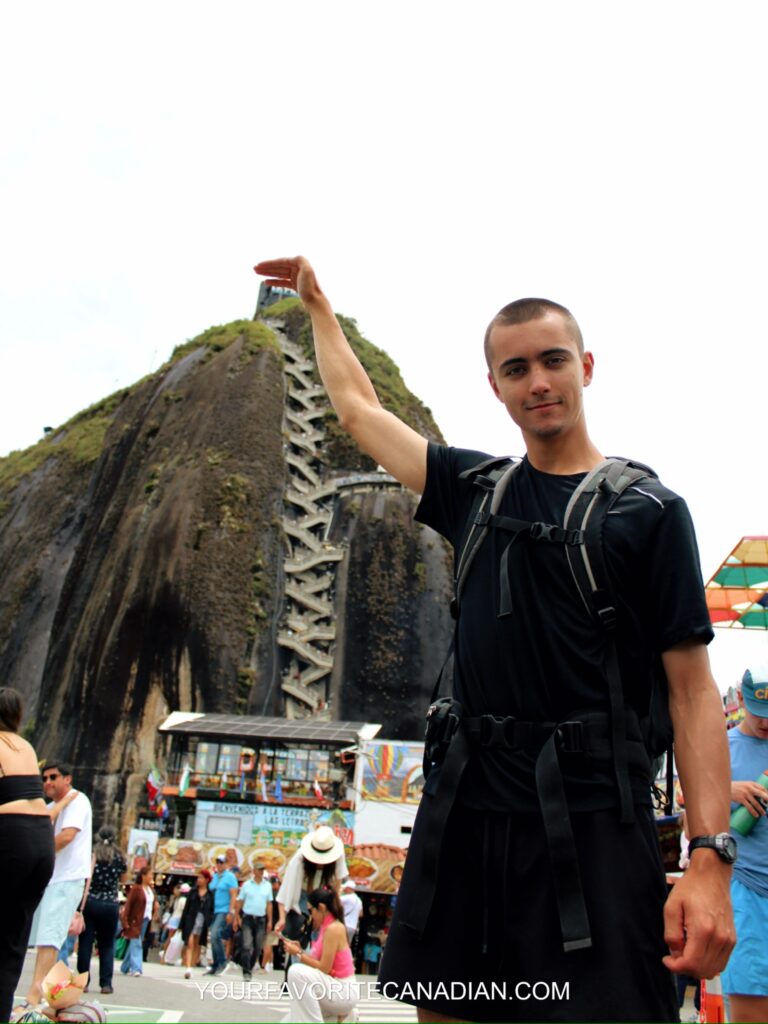
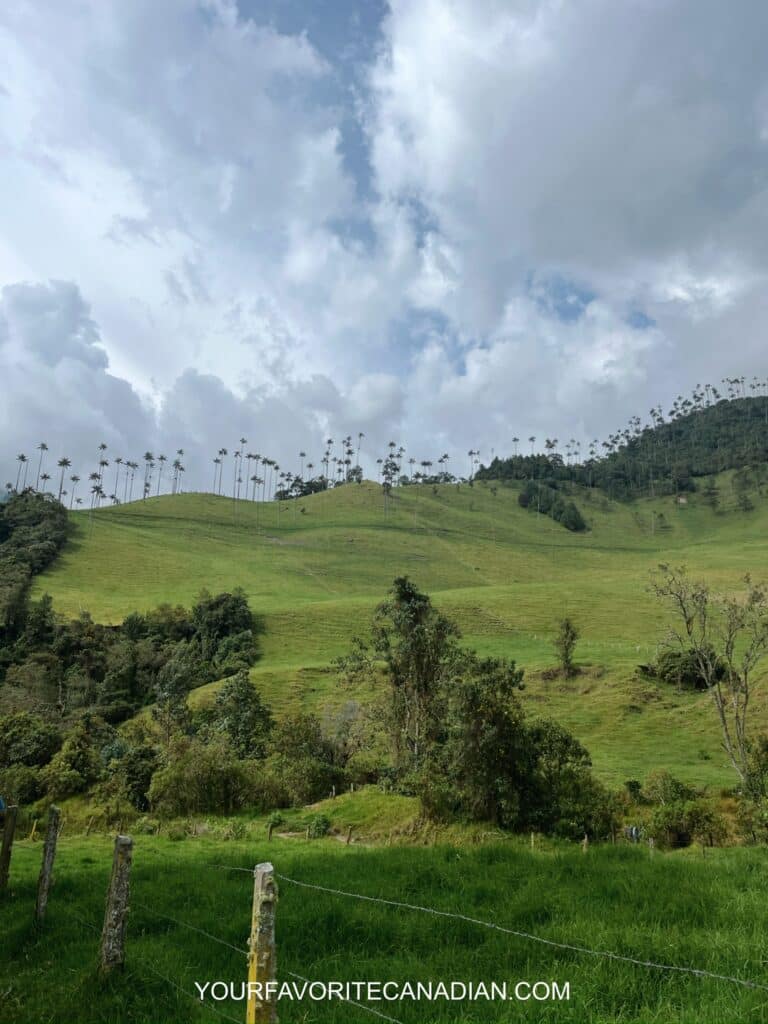
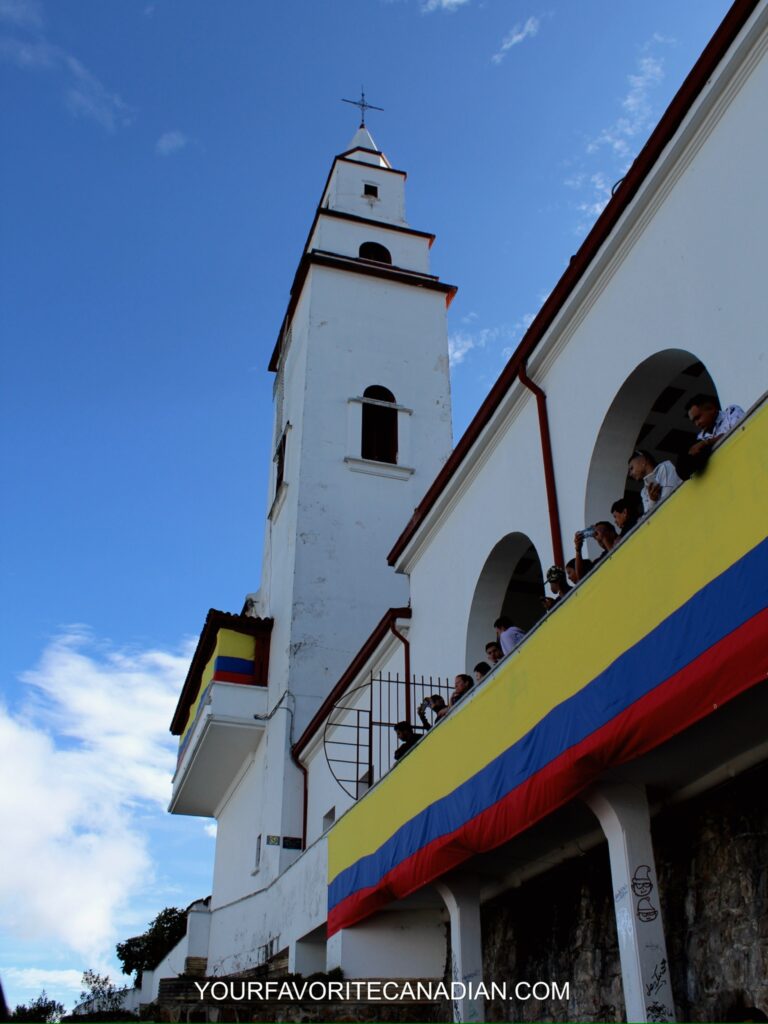
Vous ne voulez pas manquer nos derniers articles? Assurez-vous de vous abonner à notre site web, et vous recevrez une notification chaque fois que nous publions quelque chose de nouveau!
